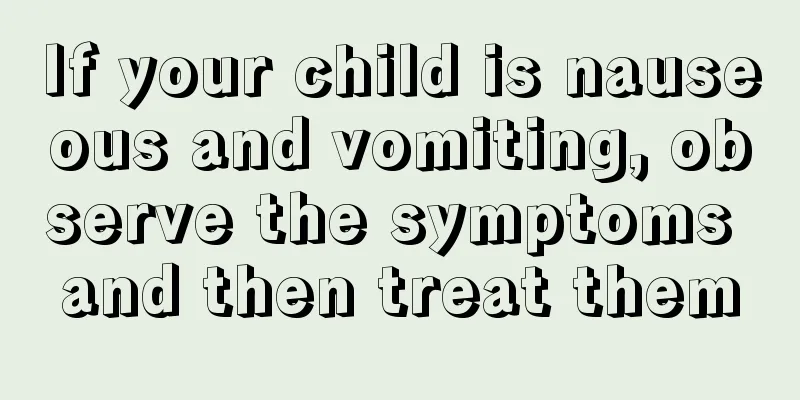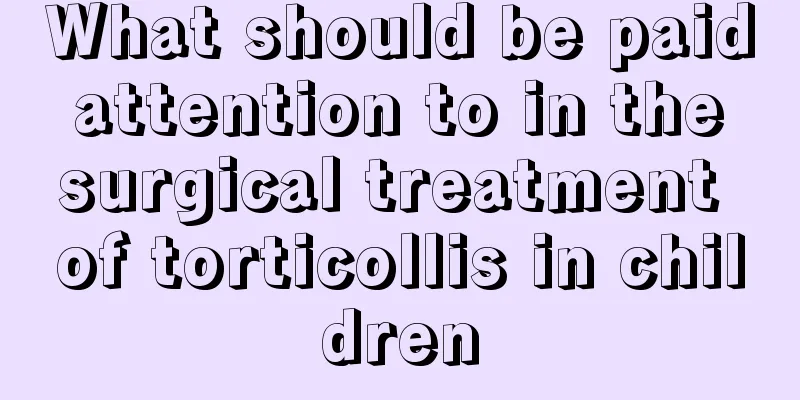What should I do if my baby has a fever and vomits?

|
During the feeding process, babies will more or less vomit milk. However, when the baby has a fever, vomiting becomes more frequent, because the fever will affect the baby's digestive system, loss of appetite, nausea and vomiting. In this situation, many parents appear flustered and at a loss. Next, we will introduce how to deal with babies who have a fever and vomit. 1. Change feeding posture. Try to hold your baby up to feed, so that the baby's body is tilted at about 45 degrees. When the mother holds the baby to breastfeed, she should keep the baby's head higher and the body lower, which can alleviate the symptoms of the baby's spitting up. When feeding your baby milk powder, try not to let your baby drink while lying down. It is better to sit or stand. If you feed your baby while lying down, do not let your baby lie on his back immediately after feeding. Instead, let him lie on his side for a while, and then change to lying on his back. Choose the nipple hole that best fits you. Babies using pacifiers should pay attention to the size of the nipple. If it is too small, they may easily inhale air; if it is too big, they may choke and cause severe coughing. Both may cause vomiting. 2. Change the feeding time. When your baby has symptoms of spitting up, be sure to shorten the time of each feeding and do not feed the baby for a long time. Allow the baby to digest and absorb slowly. Gradually, the baby's stomach and intestines will adapt and the spitting up will stop. 3. Change the feeding frequency. If your baby spits up, you should reduce the frequency of feedings from once every two hours to once every three hours. 4. The mother should strengthen care. If your baby spits up milk, it may be because he has swallowed air into his stomach. This is usually physiological spitting up milk. After feeding the baby, the mother should not change the holding position immediately. Let the baby burp, which will not easily cause vomiting. In addition to relieving the baby's spitting up, the most important thing is to cool the baby down. When a baby has a fever, if the temperature is not particularly high, physical cooling methods should be used, such as cold compresses, cooling patches, using towels or alcohol to clean the whole body, giving the baby more water, etc. Take antipyretic drugs when necessary. |
<<: What should I do about my child’s bone development?
>>: What are the consequences of meningitis in children?
Recommend
How to treat phlegm in children's throat
Children are more likely to get sick in the summe...
Why does my baby not like to eat after catching a cold?
When seasons change, colds are our favorite ailme...
What causes dry eyes in children?
Children's eyesight must be protected, but re...
Children with poor resistance should supplement these
Whether it is adults or children, only by having ...
What to do when a newborn only eats formula and not breast milk
In life, our newborns all need milk. But when bre...
Diet therapy for recurrent tonsillitis in children
Tonsillitis is a common upper respiratory tract i...
Treatment for baby diarrhea
A little diarrhea in babies is undoubtedly a majo...
Two secrets to cultivating children's patience
Before finishing the cake in front of him, Maomao...
White spot on the child's face
If you find a white spot on your child's face...
There is a small pimple on the baby's neck
The baby's skin is very fragile. Due to the b...
What should babies with bad stomach eat?
Children can only grow up healthily and happily i...
How to treat amblyopia in children? Please do all the work well!
Parents, please take note: if your child has eye ...
Why is it that the full-month baby has difficulty breathing?
Some parents will find that one-month-old babies ...
The child's face is full of small pimples
Many parents will find a phenomenon, that is, the...
Why does a child walk with his feet turned outward?
Compared with children who walk with their feet t...









